A big part of our Lynch family’s fascination with Japan is its unique Shinto and Buddhist-based culture. Despite our many travels to this wonderful land, we are always amazed by the reverence and passion the Japanese place in every aspect of life. The enduring philosophies of Wabi-Sabi, Kodawari, and Japanese Cleanliness permeate the cultural landscape of Japan and their colorful influences are impossible to overlook!
Wabi-Sabi
Wabi-sabi is a Japanese worldview and state of mind emphasizing simplicity and purity – the beauty and awe of all things humble, imperfect, and unpretentious (a beautiful sunrise, the still morning frost, a graceful Japanese tea ceremony). A longtime Japanese friend has described this philosophy to us as a sort of hopeful sadness that recognizes that nothing is perfect, nothing lasts, nothing is ever finished. Japan’s reigning organizing and tidying guru, Marie Kondo, has succinctly described Wabi-sabi as “experiencing beauty in simplicity and calmness.”
The essence of Wabi-sabi embodies the fundamentals of Zen Buddhism, emphasizing intuitive insight over deliberate intellectual conception. While this philosophy can be found throughout the world and in everyday life, the tea ceremony and yearly sakura season fully embody the spirit of wabi-sabi.
Though many of us in the West consider ideas of beauty based on the concepts of perfection, exactness, and symmetry, the Wabi-sabi perception of beauty recognizes the value of imperfections, especially as manifested in nature.

Japanese Sakura Season
Sakura does not just mean love and renewal, but also evanescence and the fleeting nature of existence. “The Japanese are implanted with sakura as a symbol not only of the season but of ourselves,” says Mariko Bando, author, and chancellor of Showa Women’s University in Tokyo. “The blossom is beautiful but it goes away. Our lives are not eternal.”
Let me die
Underneath the blossoms
In the Spring
Around the day
Of the full moon
When the poet and Buddhist monk Saigyo Hoshi wrote these lines in the 12th century about the wild cherries of Mount Yoshino, he captured a characteristic Japanese sakura emotion around the cycle of life and death. In 1989, the author and diplomat Inazo Nitobe contrasted the cherry with the thorned English rose, calling it “our flower, which carries no dagger or poison under its beauty, which is ever ready to depart life.”
Sakura was a fertility ritual in ancient Japan, with farmers climbing mountains to observe the arrival of blossoms on cherry trees, which they took as a signal to plant rice seedlings. They believed the petals embodied the deity of rice paddies, who would bring a good crop “Farmers throughout the blossoms would fly down to villages and protect the rice,” says Naoko Abe.
Suikinkutsu & Chozubachi
When visiting several of our favorite gardens in Kyoto, Tokyo, Nara, and Kamakura, we particularly enjoy the calming, beautiful sound of water drops originating from the scenery itself. This pleasant echo of the water drops’ sound, “Suikinkutsu” (literally “water koto cave”) evokes a calm, cleansing vibe that many of our Japanese friends feel is rooted in Japanese culture and Wabi-Sabi. The zither-like sound recalls the traditional instrument, “koto.”
Also functioning as a draining ornamental device, “Suikinkutsu” is regarded as a fundamental masterpiece of Japanese landscape architecture. The stone basin underneath the Suikinkutsu, known as “Chozubachi,” is where you cleanse your hands and mouth before a traditional tea ceremony.
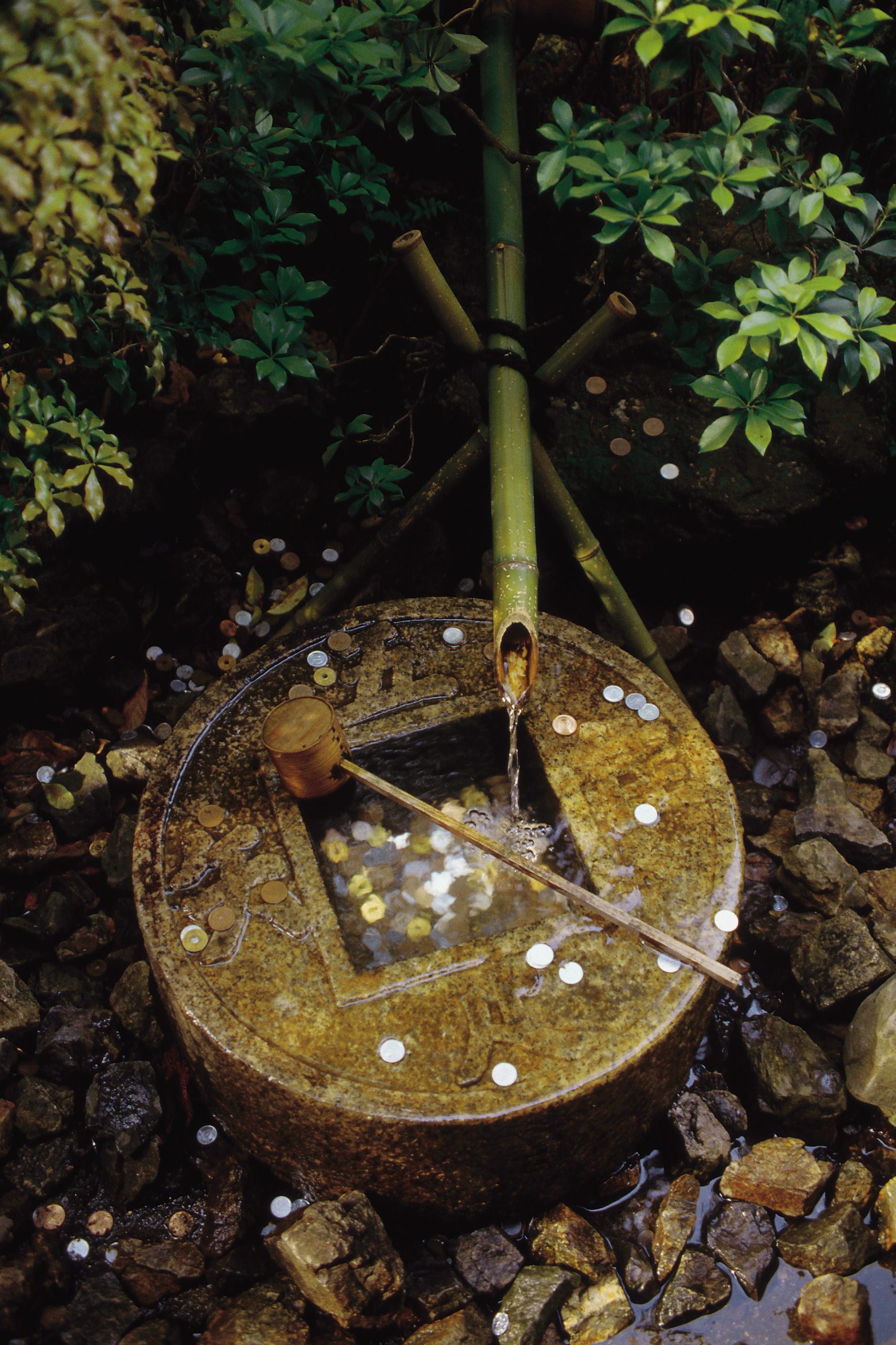
Ryoan-ji Temple Tsukuba Water Basin
Another example of Wabi-Sabi in terms of humility and simplicity can be found carved into this basin. The kanji written on the surface of the stone seems insignificant when read alone. However, when each is read in combination with the central bowl, (“ware tada o shiru”) the rough translation is, “What one has is all one needs” or “I am content with what I lack.”
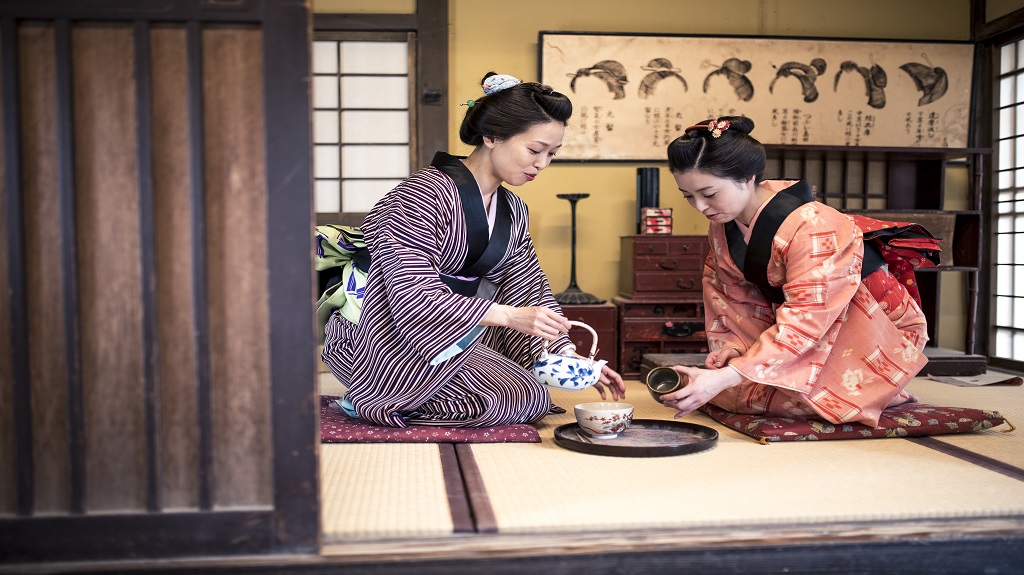
The History of Japanese Tea Ceremonies
The Japanese Tea Ceremony may be an ideal illustration of a Wabi-Sabi activity. The imperfect items used in the ceremony include mismatched cups and utensils. This concept is loosely linked to other ceramic creations like “Kintsugi”, the art of preparing broken ceramics with a paste-like mixture of gold and lacquer. “Kintsugi” emphasizes the repairs of the object, symbolizing the point that its history is a critical part of its beauty. Many of the Tea Masters we know in the Kyoto area fully believe one achieves enlightenment, and peace of mind through the simple, everyday preparation of tea.
After Zen monks brought tea to Japan in the 13th century, it was first used at Zen monasteries. As tea became a popular commodity, the first tea gatherings took shape, and betting games revolving around the blind tasting of tea became a fashionable pastime. In succession, shoin-tea gatherings held at the grand reception rooms in the mansions of the military elite laid the foundation for the further development of the rite of tea.
Zen monk Murata Shukō of the Sōmyōji temple in Nara (who studied Zen meditation with Ikkyū zenshi) devoted his time to hosting sarei tea ceremonies in the way customary for Zen temples. Soon, Shukō-style tea spread throughout the country, and the form in which the rite of tea was practiced began to gradually transition from shoin-tea to wabi-tea.
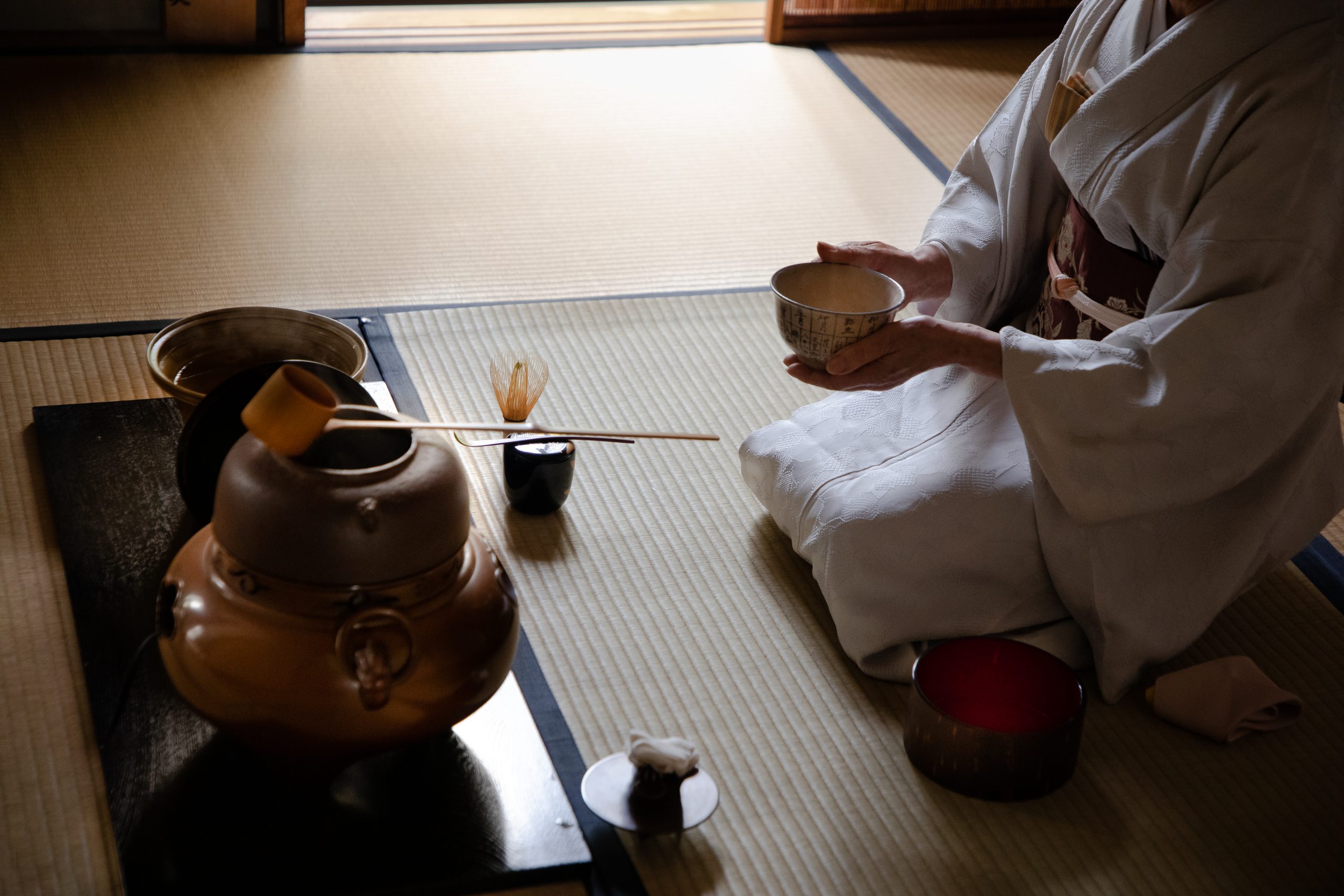
Our Favorite Tea Ceremony at Korin-in-Temple
“Chanoyu” the unique Japanese “way of tea” is a carefully choreographed assembly of elements; traditional architecture, tea bowls, and a scroll hanging from the wall perfectly judged to match the day or season. Powdered green tea is whisked and served with “wagashi” (Japanese confectionery/sweets) by the tea master/practitioner, whose precise motions are learned over many years. There are several schools of tea, the most famous descended from 16th-century tea master Sen no Rikyu.
Our Lynch family loved the experience of a private tea ceremony with our tea master Suzuki-san at Korin-in Temple in the Daitoku-ji area of Kyoto. Built in 1520 as a family temple, Korin-in is only open for a few weeks of the year. The temple’s garden represents a part of China with mountains as azaleas and islands as rocks. The garden also has a tree used traditionally in India to create the pages of sacred books. Of special note is the temple’s “entrance with windows,” a classic feature of many famous Zen gardens.
Although this sounds ponderously taxing, a private tea ceremony is most interesting with the hour or so going by very quickly! Believed to be introduced to Japan by Buddhist monks in the late 12th century, powdered “matcha” green tea is considered the highest quality tea in all of Japan.
Wabi-Sabi in the World Today
From the tea ceremony to the 21st century, wabi-sabi continues to evolve. You may see wabi-sabi’s influence on international design as many artists and architects integrate clean, understated lines in their creations, such as Frank Loyd Wright and Mies van der Rohe. Frank Lloyd Wright was once quoted as saying, “at last I had found one country on Earth where simplicity is supreme,” in reference to Japan.
Perhaps unknowingly, Henry David Thoreau was a true practitioner of wabi-sabi stating: “Live each season as it passes; breathe the air; drink the drink; taste the fruit and resign yourself to the influence of each.”
Kodawari
Kodawari refers to the uncompromising, relentless devotion to one’s art, pursuit, profession, or activity. A unique Japanese term that is difficult to translate, with no precise English synonym, our artisan friends in Japan have described Kodawari in several ways.
The general meaning is a relentless pursuit of precision, quality, attention to detail, and craftsmanship in one’s work, craft, or endeavor. This concept is pervasive and seen throughout daily life in Japan; the earnest, efficient Shinkansen cleaning staff as they meticulous clean each car during the brief station stops, the slow, conscientious crafting of Japanese artisans in creating pottery, origami, and ikebana, the humble sincere attention to the tiniest detail in the hostess service at ryokans which we experienced at both Tawaraya and Hiiragiya. In essence, Kodawari represents mastery of one’s craft, regardless of one’s social status or station in life; examples abound from an apprentice geisha (“maiko”), multi-generational sushi chef, or ramen master to a dedicated bus driver or devoted street sweeper.
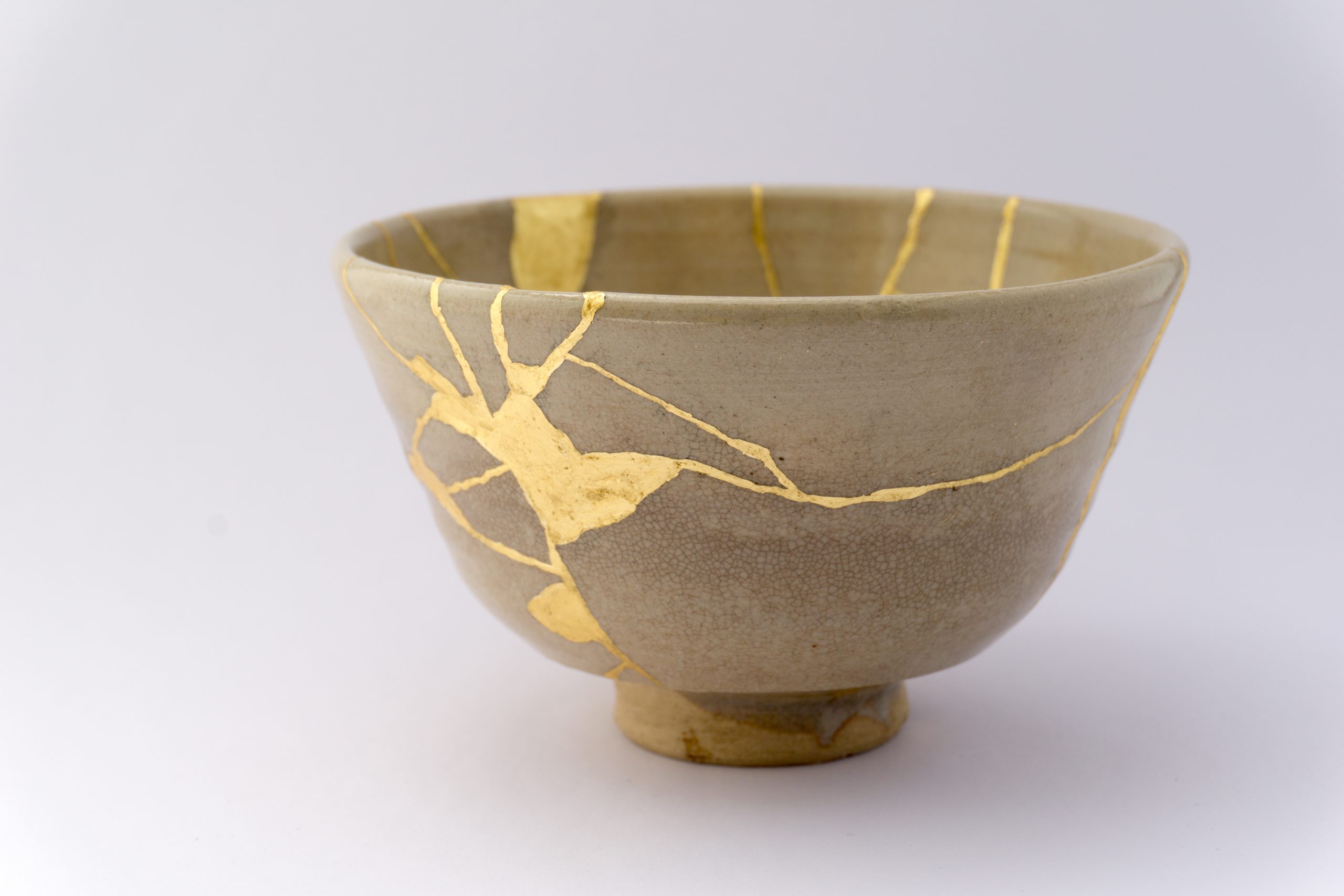
Kintsugi Pottery
Among our favorite practitioners of Kodawari is Kyoto-based Kintsugi and Urushi Master Mio Heki. Though her private workshops must be requested months in advance, we feel it is well worth the effort! In contrast to our throw-away Western culture, the ancient Japanese handicraft of kintsugi emphasizes the value of imperfection (i.e. broken ceramics). Broken ceramics are respected, healed, and in some cases highlighted gold or silver, adding beauty and value to the object as well as another chapter to the art’s history.
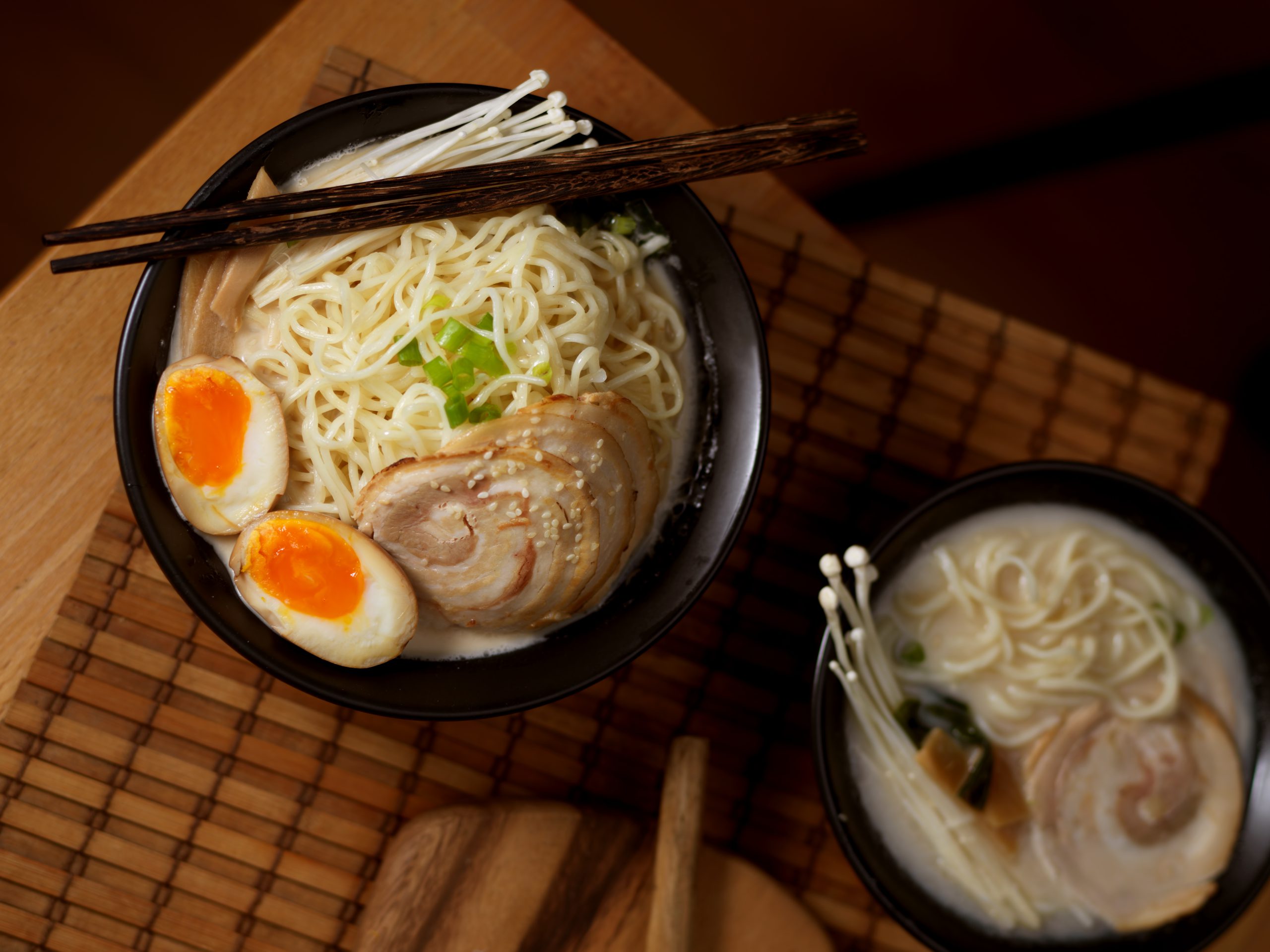
Japan’s Ramen Aesthetic
Though originally adopted from China over 1500 years ago, Japan has created their own ramen culture in five soup variations; “shoyu” (soy), “tonkotsu” (pork), miso, “shio” (salt), and “Tsku-men” (dried noodle). Every ramen chef devotes time and fastidious patience to make his/her ramen into perfection. You even see this in the slow, deliberate direction in which they stir the soup with their large wooden stirring sticks. Though we have too many favorite ramen shops to name, some of our top choices include Nakiryu in Tokyo and Ichiran and Ippudo in Kyoto. For a fun and unique eating experience, stop by the Shin-yokohama Ramen Museum, about 35 minutes by train from Tokyo.
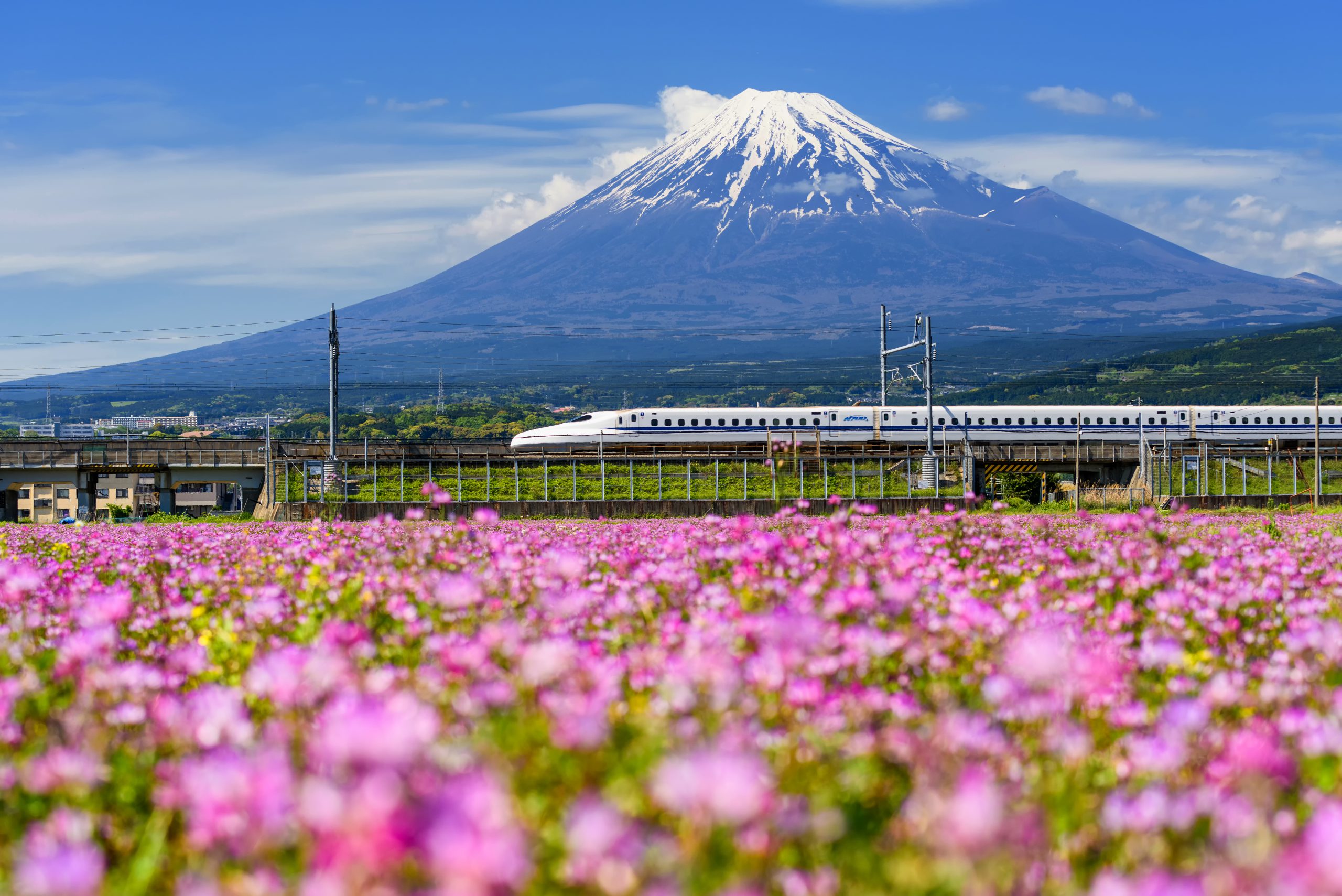
Japan’s Flawless Shinkansen (Bullet Train) Transport System
We consider Japan’s Shinkansen (bullet train) transport system to be an apt manifestation of the Kodawari sense of quality and attention to detail; immaculately clean, FAST tilting technology, and completely reliable. Celebrating over 50 years of service, Japan’s Shinkansen service can take humble pride in having the best safety record in the world, having served seven billion passengers without a single passenger fatality due to collision or derailment(!) The “7-minute Miracle” crew cleaning regimen is quite the experience to see.

The Time-Honored Art of Sword-Making
Considered the premier present-day swordsmith in all of Japan, Yoshindo Yoshihara is the quintessential personification of Kodawari. Yoshindo san trains 6 apprentices in his Tokyo workshop, with each apprentice taking at least 10 years of training to become a true sword craftsman. At present, only around 300 swordsmiths remain active in Japan, with just 30 being full-time active practitioners. Using many special, ancient tools in the painstakingly protracted process, sword making includes smithing, with special attention to handling the iron and creating the crest and the scabbard. With his works being displayed at the Metropolitan Museum in New York and the Museum of Fine Arts in Boston, each of Yoshindo san’s swords is custom made and properly reflected in the cost of his discerning clients(!) We look forward to returning to his Tokyo workshop.

Nori from the Ariake Sea
Each region of Japan has its own long-cherished foods packed with unique flavors and rich in nutrition. Producing these local specialties are farmers embodying the essence of Kodawari. Nori seaweed farmer, Keiji Simauchi, is exemplary of farmers who are nothing short of craftsmen, using passion, ingenuity, and steady effort.
Working in the Ariake Sea south of Saga prefecture in Kyushu, Shimauchi carries on the traditional fixed-pole cultivation technique that he learned from his father. Nets are attached to poles fixed into the ocean floor and nori seedlings are planted on the nets. The tidal fluctuation of the Ariake Sea causes the appearance of extensive mudflats twice a day. Seedlings feed on the nutrients in seawater when the tide is in and absorb the sun’s energy when the tide is out. The method takes time but helps seedlings develop high concentrations of amino acids that create umami savoriness.
Further incorporating the philosophy of Kodawari into his work, Shimauchi cultivates his own seedlings by the traditional methods nurtured by the natural blessings of the Ariake Sea. He says, “I aim to reproduce the nori my father grew.”

Aesthete Photographer Tony D’Orio
Though not Japanese, we consider award-winning Chicago-based artist Tony D’Orio to be the archetypal American personification of Kodawari. While filming the streets and people of Chicago, Tony developed a voyeuristic shooting style and a love affair with the human face, or as Tony puts it, “of characters”. Using his own personal aesthetic of lighting and portraiture, words cannot describe Tony’s singular craft. Click here to enjoy Tony D’Orio’s remarkable gallery!
Japanese Cleanliness
Regardless of where you travel in Japan, its citizens are well-groomed, neat, and fastidiously clean. This sentiment extends to streets, homes, office buildings, wherever; from garbage men with carefully sculpted hair to the country’s meticulously spotless and efficient white-gloved taxi service.
This Shinto-centered fixation with cleanliness is symbolized whenever entering any shrine. Before entering, one must perform “temizu,” a short cleansing ritual meant to prevent outside impurities from entering the shrine. We also cannot overlook Japan’s meticulously clean bathroom culture (much impressed with Toto’s new all-spraying all-deodorizing, oscillating, heated NEOREST NX toilets at the Aman Tokyo)!

From Early Education to Daily Work Life
Japan’s culture of cleanliness begins in early education and is taught through high school. The daily school schedule teaches the importance of keeping one’s things and space clean, neat, and organized.
Upon arriving at school each day, students leave their outside shoes in lockers or shelves and change into trainers for the day. As the students advance to higher grade levels, the conception of their space extends to include their neighborhood, city, and country. In the workforce, it is typical that around 8:00 a.m., office staff, and retail shop employees will clean the streets around their place of work and routinely monitor them throughout the day.
Compliance During the COVID-19 Pandemic
This culture of cleanliness has also served Japan well throughout the COVID-19 pandemic, as the country has one of the world’s lowest COVID-19 death rates (246 out of 1 million people!) without mandates and few restrictions. This is due to handwashing and mask wearing already being widely adopted pre-pandemic. In addition, there has been heavy social compliance with social distancing, wearing masks (mask use is typically held at 90%), vaccinations, and the “Three Cs” slogan: avoid closed spaces, crowded places, and close-contact situations.
Sporting Events, Musical Recitals & Public Spaces
Japan’s fixation with cleanliness extends to public events, like sports, concerts, and public transportation. After sporting events and concerts, fans stay after to clean up garbage from around the venue. Smokers are also encouraged to bring portable ashtrays and to refrain from smoking around others. Not surprisingly, Japan’s railway Shinkansen transportation system is equally immaculately clean. Between each ride from Tokyo station, the Tessei Cleaning Crew has seven minutes to clean each train, readying it for the next round of passengers.

Crisp & Clean Yen Currency
We most enjoy using Japan’s many ATM machines. Your bank notes emerge so crisp and clean that they almost look too beautiful to spend! Though some Yen may still become soiled, shops, restaurants, hotels, and taxis will issue your change in a little tray, never hand-to-hand!

